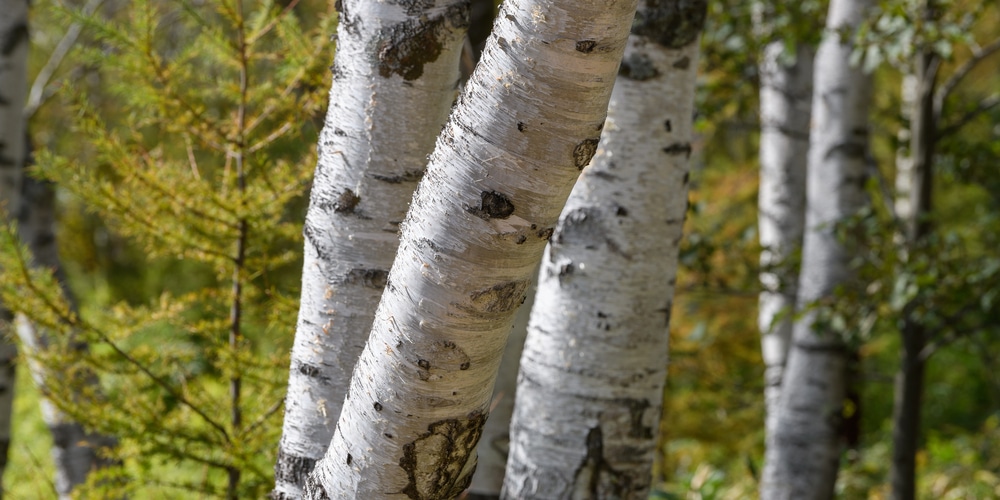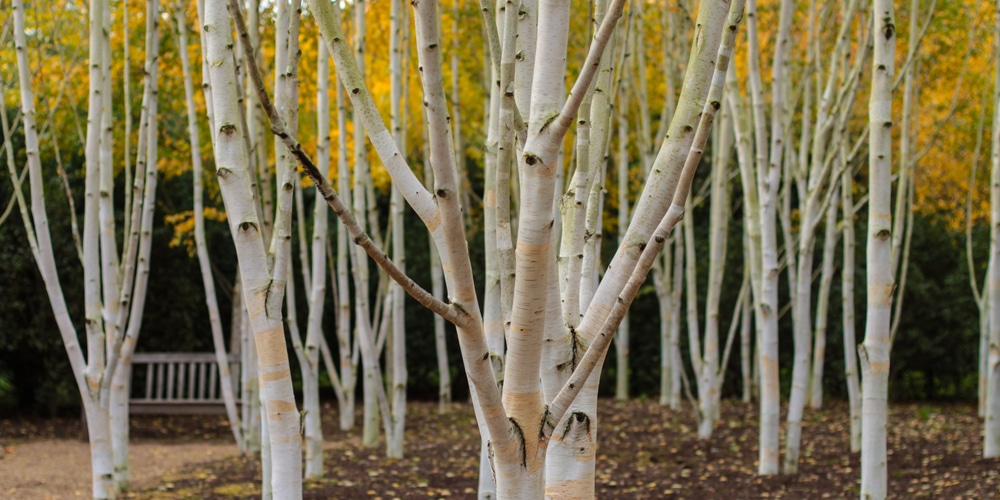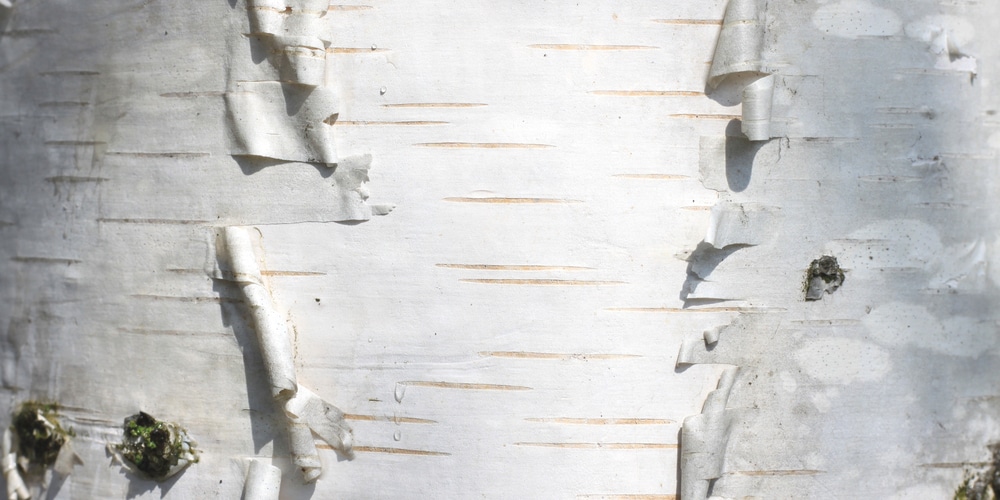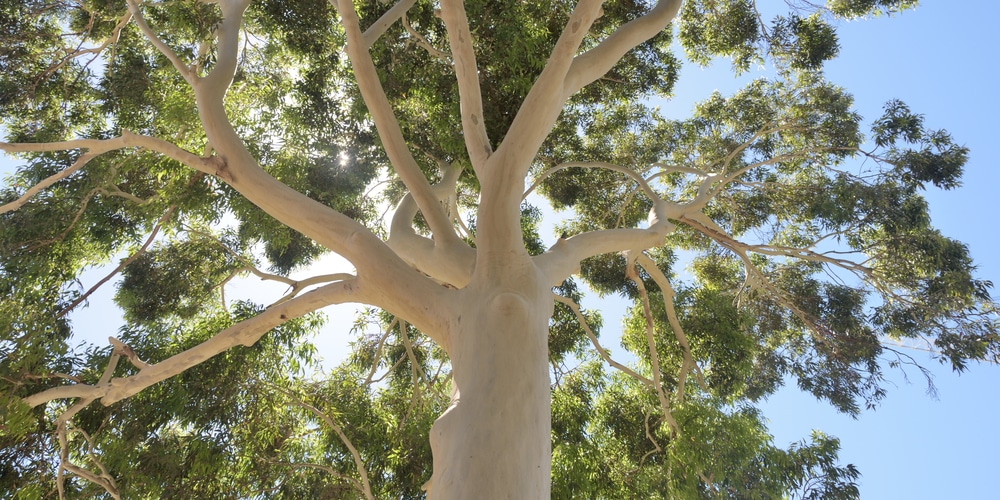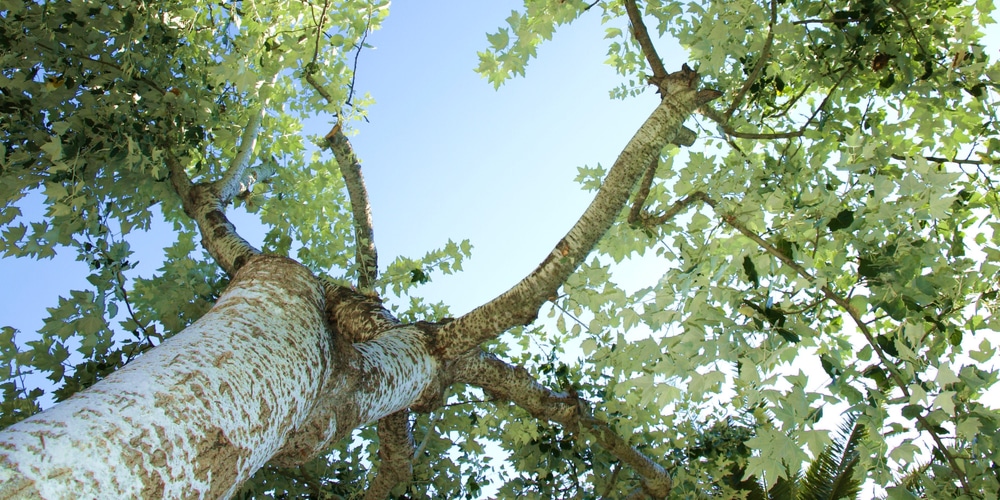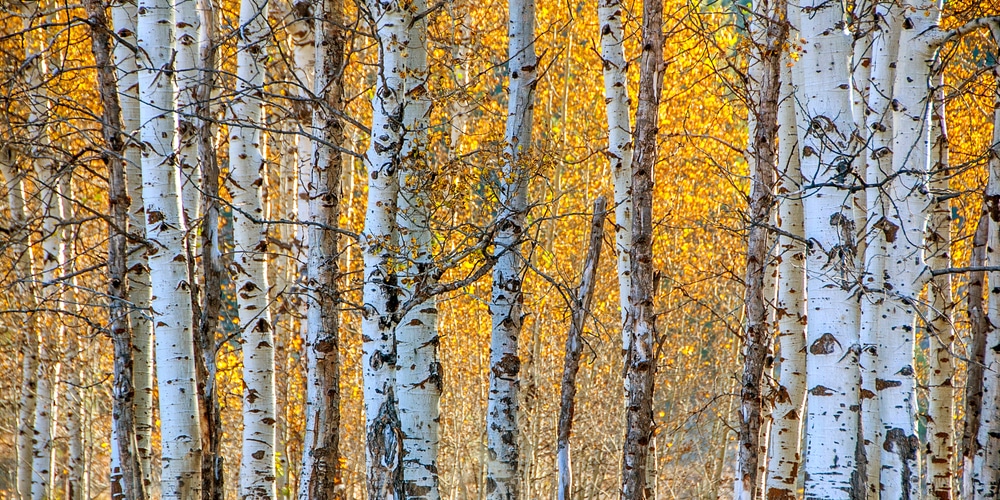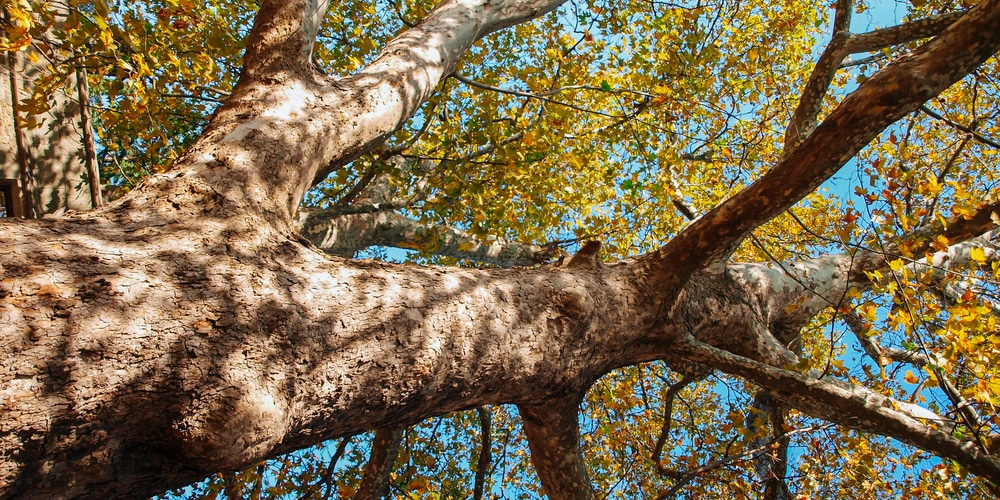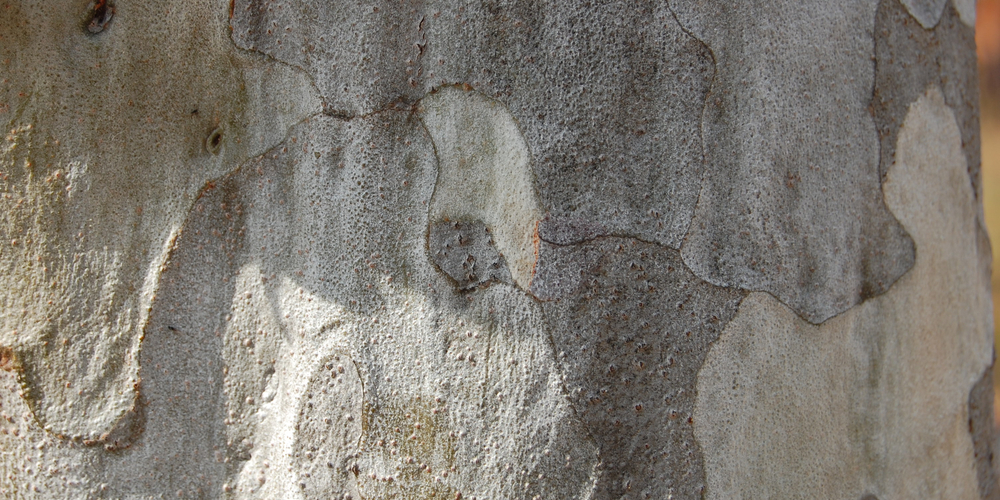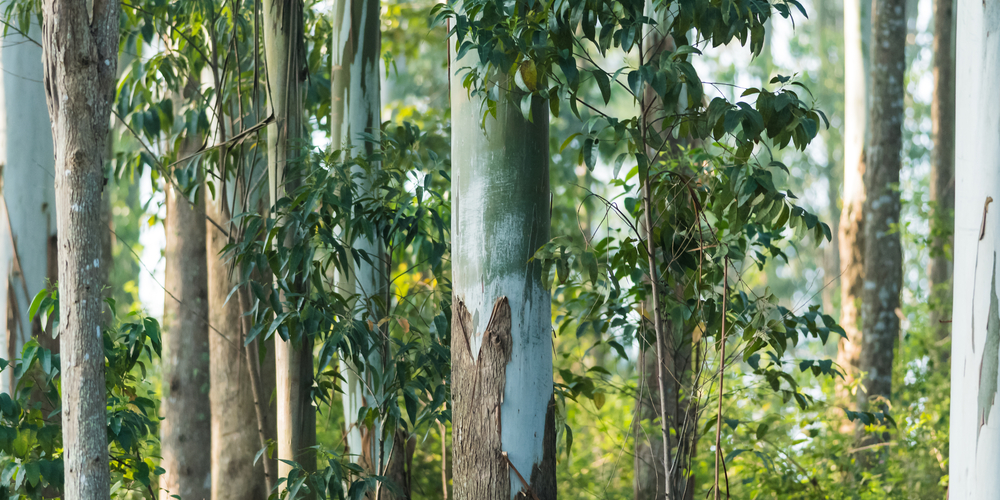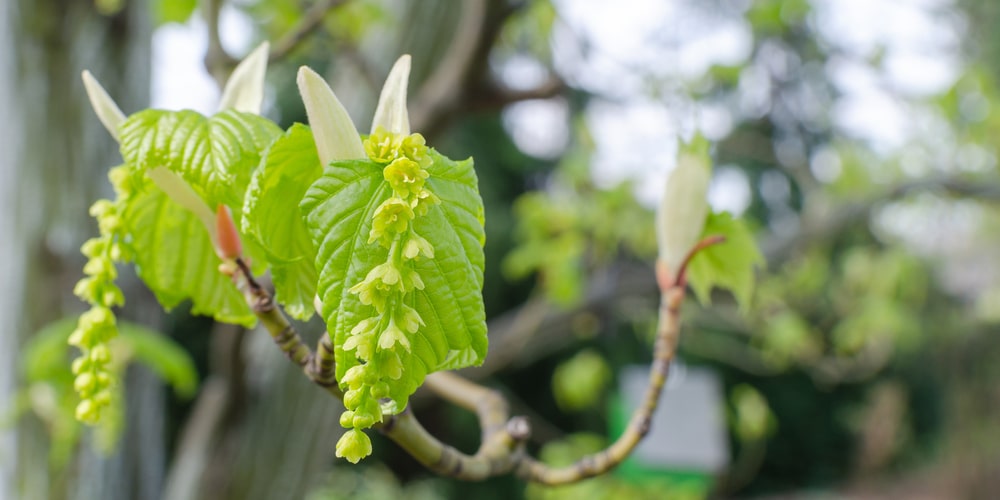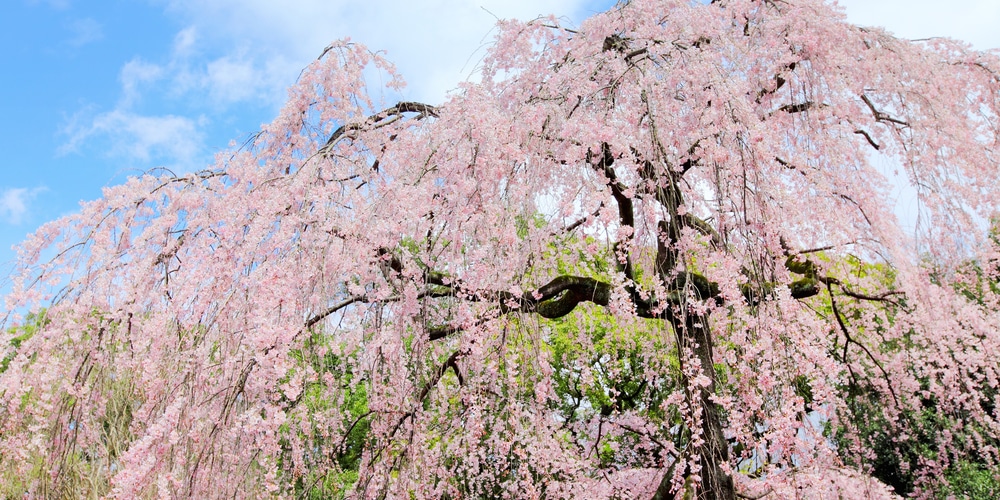With trees, nothing catches the eye more than a uniquely-colored trunk. If you’re looking to have visitors with their mouths agape as soon as they step into your property, plant any of these twelve trees with white bark.
Trees with white bark
Japanese White Birch
Japanese White Birchs bring eye-catching detail year round, starting from spring through winter. The catkins, vivid fall foliage and pale bark all come in quick succession and make for an outstanding landscape spectacle.
The tree grows in cold climates, particularly in zones 2 through 6 and features a height and spread of somewhere around 20 feet. Japanese Birch thrives in any soil type as long as you water it regularly. Pruning can be done before the first sign of frost.
Himalayan Birch
Another cold-loving white bark cultivar, the Himalayan Birch prefers to live in USDA zones 1 through 8, with protection from afternoon sun in the latter regions. It’s stylish and doesn’t take up too much space, thanks to its vertical growing habit.
Himalayan Birch is an excellent decoration in yards that can accommodate them. It’s so easy to care for and can be trained to have either a single trunk or multiple ones depending on how much space you have available.
Paper Bark Birch
Paper Birch is a deciduous variety that’s native to North America. It has a narrow spread and white peeling when it reaches maturity at five years.
Most people in zones 2 to 7 use paper birch as a privacy screen. It got its name due to the fact that early settlers often cut out the bark to use as paper, baskets and canoes. Give it plenty of sun and in a relatively moist site and it can grow up to 70 feet.
Silver Birch
If you need a versatile tree with stunning white bark, we have the answer for you. Silver Birch does well in any environment both big and small and can grow in a suitably-sized container with rich and moist soil.
Betula Pendula grows quickly but it does have a singular requirement- constant watering. It loves to drink but rewards you with red bark that peels off to become white as it ages.
Ghost Gum
Ghost Gum is aptly named because the star of the show is clearly the white-colored and thick trunk. If you live in zones 9 or 10, then you’re in luck- you can grow the Ghost Gum and it will thrive for years to come.
The tree is native to Australia and is considered an evergreen species in the appropriate regions. When frost comes the deep green leaves turn into a rich purple, and it blooms late fall when others are about to hibernate.
White Poplar
A vigorous grower that can reach up to 60 feet and above, the White Poplar boasts dirty white bark with line etchings for an unforgettable sight.
The tree naturally grows up and away with multiple branches spreading over time. Make sure to put White Poplar in a very sunny spot in your yard and hold off on the watering until the soil is bone dry.
Quaking Aspen
Quaking Aspen is great in areas that get cool summer days, notably those in zones 2 through 8. The medium sized tree has leaves that ‘tremble’ with the slightest breeze, seemingly to draw the viewer’s attention to the gray-white bark.
Quaking Aspen grows up to 50 feet tall and a 30 feet spread. It’s best grown in generous space and away from existing structures.
American Sycamore
Platanus occidentalis has a very white, almost mint-green bark in a stately and elegant form. If you’re lucky enough to live in a large property then you should definitely plant one in your yard or garden.
American Sycamore thrives in USDA zones 4 through 9 and requires all-day sun. You can slack off in the watering department and in providing a rich and organic soil medium, but it does need the occasional pruning and removing leaves and deadwood.
Lacebark Pine
An aesthetic stunner through and through, the Lacebark Pine’s greatest attraction is definitely its bark. As the green bark ages it peels off and goes ‘camouflage mode’, with white, brown and dark green splotches decorating the surface.
Lacebark Pine grows in zones 5 to 8 and can reach up to 65 feet. It’s a slow grower though, so patience is required.
Snow Gum Eucalyptus
Snow Gum is also called eucalyptus pauciflora niphophila, has a stark white bark and an upright growing pattern. It loves the warmth and will prefer to be grown in zones 7 through 10. However, the pickiness ends there- you can plant it in any soil type and it will be generally happy.
Choose its planting site carefully since it doesn’t like its roots disturbed and can get stressed out. That said, it’s not meant to be a container plant but it’s great for small yards and gardens. Water it well while young and keep away debris and weeds. Once established, you won’t need to worry about anything else.
Acer Tegmentosum
A cold loving tree with white bark, the Acer Tegmentosum can do well up to USDA zone 4.
It’s different from other trees in that the bark is not completely white- there are some cream and pale green stripes that fool the eye into thinking that it’s just one color. The texture will remind you of reptiles, which isn’t far from its moniker, the snakebark maple.
There are several other acer species you can choose from, including Valley Phantom, Joe Witt and White Tigress. You’ll also need a spot that has partial sunlight and is protected from strong winds.
Weeping Cherry Tree
Prunus pendula has a white bark that nicely contrasts to the pink blossoms it puts out in the spring. Its green leaves sparkle in the summer while the bark acts as a central focus in any landscape or yard.
The Weeping Cherry Tree is easy to care for, and its droopy branches do not generally require pruning. As an added bonus, it produces red berries that birds absolutely love.
Related Article: 8 Trees with Peeling Bark
